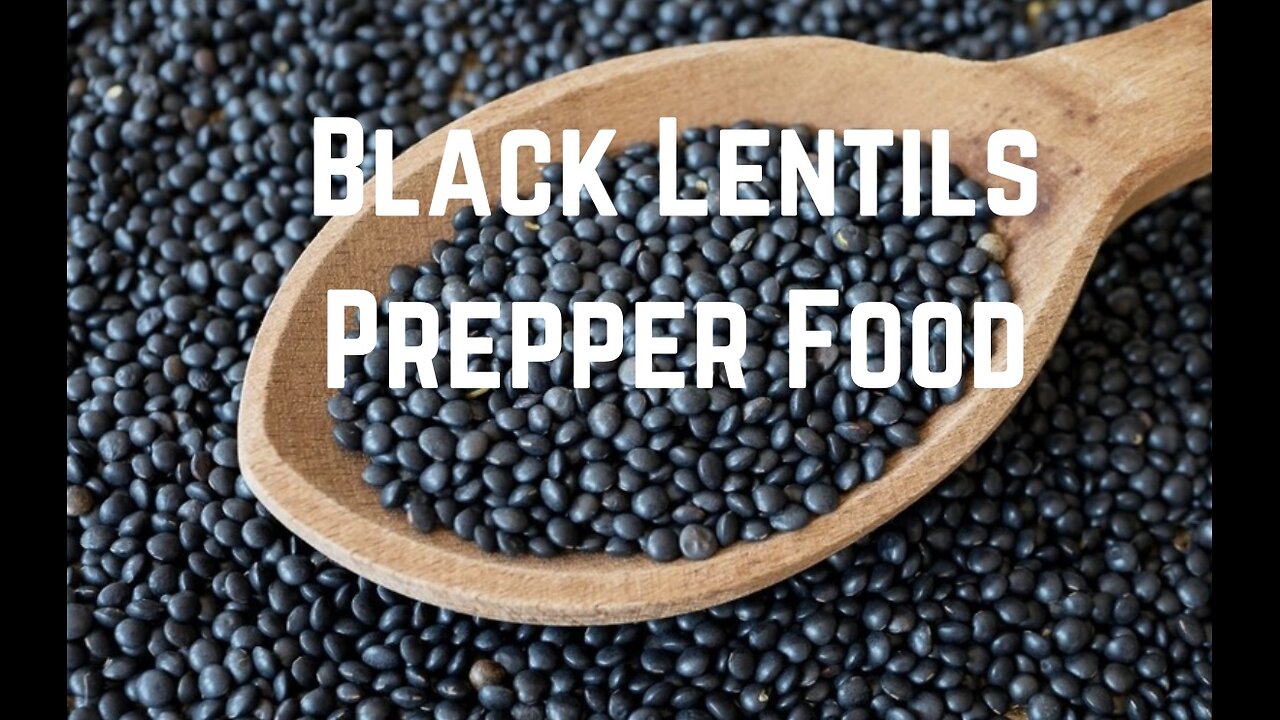Premium Only Content

Black Lentils Prepper Food
Black Lentils can be considered one of the ultimate prepper staple foods. They are also known as Beluga Lentils for their resemblance to caviar. Similar to black beans, yet round, smaller, with a mild nutty flavor.
Unlike other types of lentils like brown or red, black lentils hold their shape when cooked making them a favorite in salads. Also they are perfect for soup or stews.
They are the most nutrient dense of all lentils, and easy to cook with no presoaking. High in protein, calcium, potassium, iron, folate, and fiber. Combined with any grain, they make a complete protein.
Easy to grow by planting in a 5 gallon bucket with drain holes, raised bed, or in ground. You can find the organic seeds in the bulk section of the health food store. Seeds are planted directly in soil at 1 depth. Space 1 inch apart. Thin successful plants 4-5 inches apart. Rows 18-24 inches apart.
Requires full sun and moderate water. Grows into a bush about 12 to 30 inches high. USDA grow zones 4 through 11 in the Spring. Grows best in deep, sandy loam soils, however they will grow in all soil types with good drainage. Lentils are ready to harvest after 100 days, and pods are brown/dry. You will be able to hear lentil rattle inside dry pod.
As with other legumes, planting lentils near alliums such as onions, garlic, and chives should be avoided because they tend to build up sulfur in the soil, which in large enough concentrations can inhibit the growth of lentils. Unlike the popular Red Lentil, Black Lentils do not require processing with a millstone to remove the outer husk and to be split in half.
For the 3 step harvest process, first cut the pods from the tops of each tendril and separate the bulk of the plant. For threshing, put the dry plant on a sturdy flat plastic tray or tarp, stand on one end of the plant and shuffle over the rest of it with one foot. The pods crack open and separate from the stem.
Some place plant in a bag and step on bag. Alternately, some fill a 5 gallon bucket 3/4 full with the plant, and lightly push down on the plant with a baseball bat to thresh. Some additionally filter using a kitchen colander on top of container with holes of colander large enough for beans to pass through while rubbing with hand.
Beans, chaff, and stems will remain for the winnowing. Place in bucket or tray, pour into second bucket or tray with natural wind or a house fan blowing away chaff. The dry lentils are now ready for storage.
The average lentil yield is 1,098 pounds per acre, or 2.5 pounds per 100 square feet aka 10 feet by 10 feet. Using that figure, you would need about 6,000 square feet to produce 150 pounds of lentils, enough for one person for one year.
Black Lentils Recipe (Dhal Makhani)
https://www.harighotra.co.uk/dhal-makhani-recipe
-
 2:08:21
2:08:21
The Illusion of Consensus
9 days agoFormer FDA Official Dr. Philip Krause On White House Pressure To Approve Covid Vaccines at the FDA
3.37K21 -
 23:24
23:24
MYLUNCHBREAK CHANNEL PAGE
6 hours agoDams Destroyed Turkey
13.4K24 -
 1:50:26
1:50:26
Darkhorse Podcast
5 hours agoThere’s a New Tariff In Town: The 271st Evolutionary Lens with Bret Weinstein and Heather Heying
14.8K27 -
 29:36
29:36
The Brett Cooper Show
2 days ago $2.46 earnedThe Non-Binary Samurai Game No One Wanted | Episode 19
13.7K27 -
 16:46
16:46
Stephen Gardner
6 hours agoJudge Boasberg THREATENS to ARREST Trump White House leaders!
19.6K102 -
 1:30:53
1:30:53
Michael Franzese
21 hours agoMichael Franzese UNLEASHES on the Left: Lies, Fraud, and Betrayal
18.1K31 -
 6:15
6:15
SKAP ATTACK
1 day ago $2.27 earnedGiannis Goes Full FREAK MODE in Historic Game
20K2 -
 19:35
19:35
DeVory Darkins
2 days ago $33.93 earnedMedia suffers failure after Elon Musk hit piece gets DEBUNKED
84.8K152 -
 12:38
12:38
Talk Nerdy Sports - The Ultimate Sports Betting Podcast
6 hours ago4/5/25 - Talk Nerdy Sports – Madness. Money. Mayhem.
44.9K4 -
 3:18:37
3:18:37
I_Came_With_Fire_Podcast
14 hours agoTHE HUNDREDTH EPISODE!!!
60.6K7